#neogene
Text


Thalassocnus, a semi-aquatic ground sloth. There's a little reconstruction to show it swimming too!
643 notes
·
View notes
Text
167 notes
·
View notes
Text

On the edge of a Miocene South American grassland, a group of Thoatherium is ambushed by a Phorusrhacos. They scatter, but the terror bird catches one of the litopterns, lifts it high up into the air, and SLAMS it down on the ground to kill it. Other nearby animals have mixed feelings about this situation. Tupinambis flees for its life, while Dryornis flies a little closer in case it can have a bit for itself. Hapalops and Astrapotherium are unbothered and have business of their own to take care of.
#phorusrhacos#thoatherium#terror bird#phorusrhacid#litoptern#cariamiform#bird#mammal#santa cruz formation#miocene#neogene#south america#autumn#tupinambis#lizard#squamate#dryornis#new world vulture#accipitriform#hapalops#ground sloth#pilosan#astrapotherium#astrapothere#my art#paleoart#palaeoblr#cw: animal death#cw: blood
77 notes
·
View notes
Text
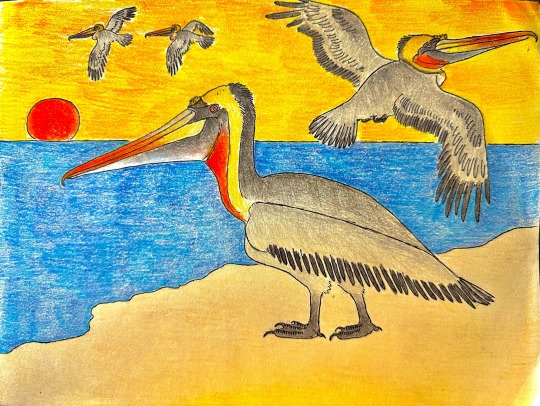
Paraná Pelicans in the Sunset: Pelecanus paranensis is a newly-discovered species of fossil pelican hailing from the late Miocene, and the first one to be found in the New World. It lived along the edges of an inland sea in what is now the Paraná Formation of Argentina, and it was also within the size range of some of the world’s largest extant pelican species. Since the Paraná Pelican was found to have been closely related to the Brown and Peruvian Pelicans I based the bird’s appearance and colours off of those of both species.
#paleoart#paleontology#paleontography#cenozoology#cenozoic life#cenozoic#dinosaur#pelicans#pelican#miocene#neogene
55 notes
·
View notes
Text
✨ PREHISTORIC CHALLENGE ✨
(part 2 because I couldn't fit all the art in one post)
And here's the final art of my #PrehistoricChallenge featuring the Neogene and Quaternary.

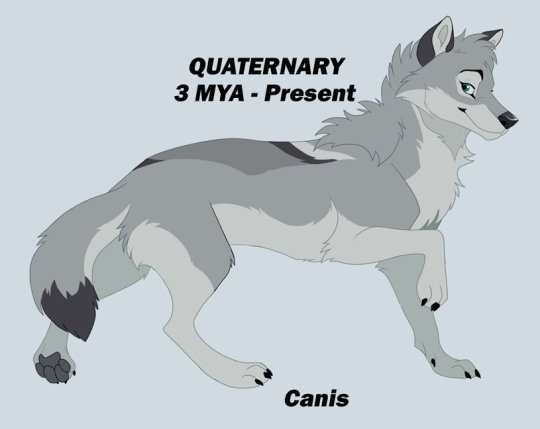
#PrehistoricChallenge#my art#fursona#drawing challenge#paleoart#neogene#quaternary#archaeocyon#canis#aspenwynd
14 notes
·
View notes
Text

w... woman
4 notes
·
View notes
Text
my life's work as someone who definitely didn't go to college and will have no impact on the earth is largely ignoring the existence of the Jurassic and Cretaceous period in order to prop up the history of life on Earth that is not the constantly presented non-scientific dinosaurs depicted in every piece of popular art. I do not wish to speak of the Triceratops, I wish to speak of when nearly all life onland was Lystrosaurus, big old cow-like synopsid with fangs. get your sauropods out of here, i want to talk about when crocodiles had land genuses and how we almost lived in a world where some still survived. i never want to see a fucking t-rex ever again, but the world should be as obsessed with sloth bears like megatherium as i am. get these fucking dinosaurs out of my face i want OTHER EXTINCT ANIMALS TO TAKE THE SPOTLIGHT AND I WILL BREAK THE WORLD IN ORDER TO SHOW YOU ALL----
#dinosaurs are a dead meme#kinda cringe to post them tbh#Dinosaurs#Megatherium#Synopsids#Permian Period#Permian Extinction#Triceratops#Crocodiles#Alligators#Jurassic#Triassic#Cretacious#Devonian#carboniferous#Cenozoic#Paleocene#Eocene#Oligocene#Neogene#Miocene#Pliocene#Pleistocene#Mammals#Reptiles#Birds#T-Rex#tyrannosaurus rex#Sauropod#i don't know how to tag this
11 notes
·
View notes
Text
The period with the least votes will be eliminated.
Round tag
#poll#tumblr tournament#tumblr bracket#geology#geo round 1#precambrian#history#cryogenian#silurian#triassic#neogene
10 notes
·
View notes
Text
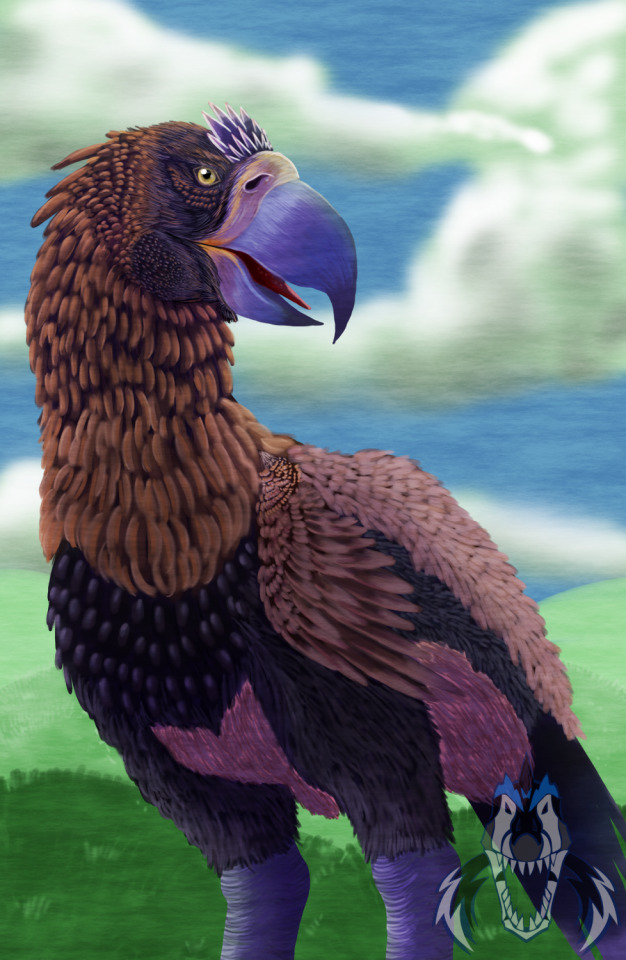
Titanis Walleri
5 notes
·
View notes
Text
I couldn’t resist! They’re in my shop, I rushed them through production because this has been looping nonstop in my head.

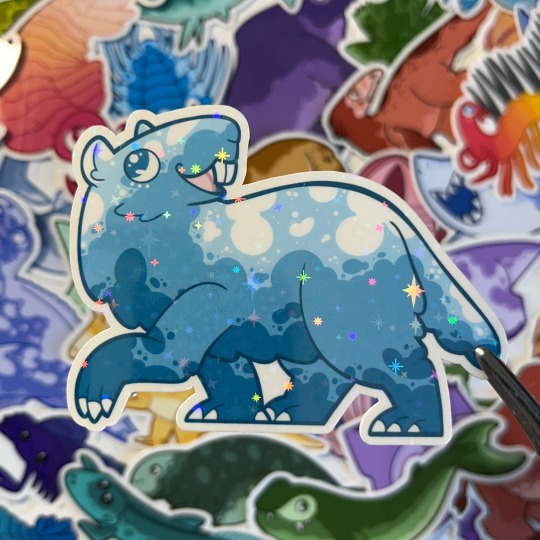
#video#art#my art#capybara#paleontology#paleoart#josephoartigasia#neogene#rodent#mammal#I do not agree with them just looking 100% like modern capybaras#so uh enjoy a blue baby
21 notes
·
View notes
Text
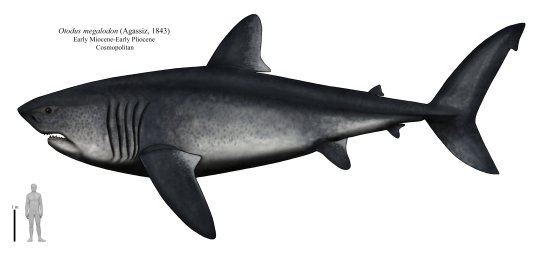
I guess it was matter of time until I had to do it, like with T. rex it seems is paleoart fate to draw once Otodus megalodon, the largest predatory shark on history, fragmentary as hell but still enough that it can be speculate the body shape being the source mostly based on recent 2D body reconstructions in Cooper et al. 2020 with some minor changes from different suggestions, overall sticking on the body proportions speculated for a high pelagic macropredator.
To remark about the size of the specimen in my drawing is scaled to IRSNB P 9893, I'm quite cautious about the max size estimations even though corroborated by math is pretty much too speculative with the very poor known body material, the range of size is variable and the biggest often are the most fragmentary

16 notes
·
View notes
Text
Let's take a closer look at the hominin skulls in the Senckenberg Museum's human evolution room. Keep in mind this is not a linear progression through our ancestors, and more like a bunch of closer and more distant cousins.


The first one, Sahelanthropus tchadensis is seven million years old, and may very well not be a hominin at all. I've always leaned towards the hypothesis that it's a gorilla relative, not one of ours. No matter which branch of the apes it belongs to, it lived not long after the time the human-line (hominins) and the chimp-line separated, and possibly even before that point!


Ardipithecus ramidus, the first hominin from where we can start making a fairly decent family tree of our relatives. Before this point, 5 million years ago, hominin fossils are very rare, fragmentary, and difficult to assign. One of the most interesting things that does seem to emerge from these early fossils is that we have walked on two legs for a long time. Maybe even so long that our common ancestor with the chimps and bonobos did it!

Lucy represents Australopithecus afarensis, who shows up at this point (3.3 million years ago).


Australopithecus africanus, the Taung child to be precise. We're about 2.8 million years ago at this point. Australopithecines must've been such fascinating creatures.
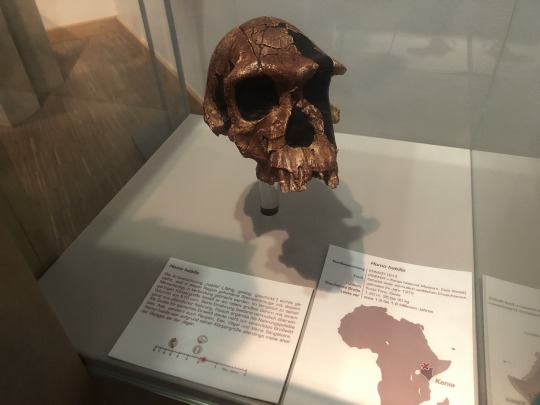

Homo habilis, the 'handy man', named that way because when they were discovered they were thought to be the first humans who used tools. Since then, Australopithecus tools have been found, and tool use by many different animals has also been documented.
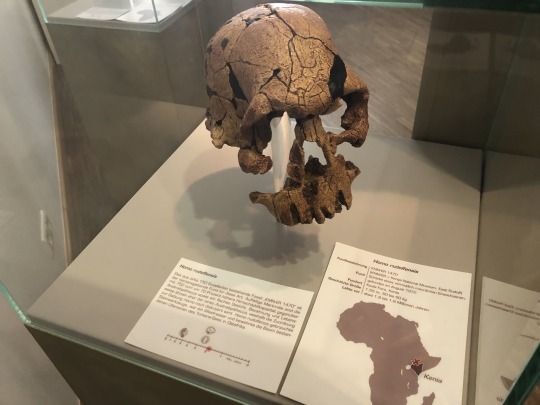

Homo rudolfensis, a population of humans who lived at the same time as Homo habilis and were notably bigger and a little brainier. Does it warrant being its own species? That depends who you ask. Splitting vs lumping is a point of contention in almost every group's biology, and it can run especially high in the field of human evolution since hominins are A very high profile and important fossils that directly relate to our own origins, and B an extremely tangled group that seems to have produced loads and loads of isolated populations and subspecies that regularly migrated all over the place and had frequent interbreeding events. Personally I tend to come down on the side of lumping them into a few major species.


Paranthropus boisei. These were basically a separate lineage of australopithecines, quite different from our own ancestors, who continued to do australopithecus things until quite recently. They were very good climbers and seem to have returned to the trees.

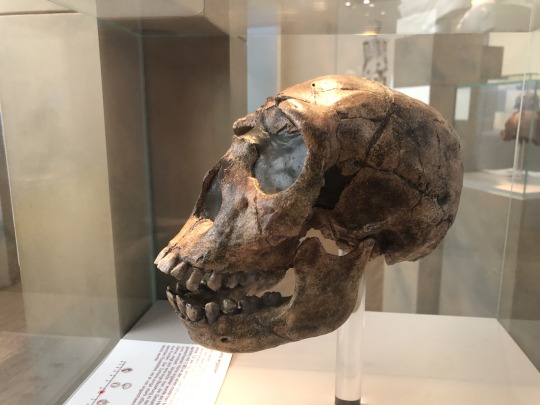
Homo ergaster, either a close relative or a synonym of the more famous Homo erectus. This is the point where we got really brainy, probably figured out how to make fire ourselves, and spread from Africa to Eurasia.

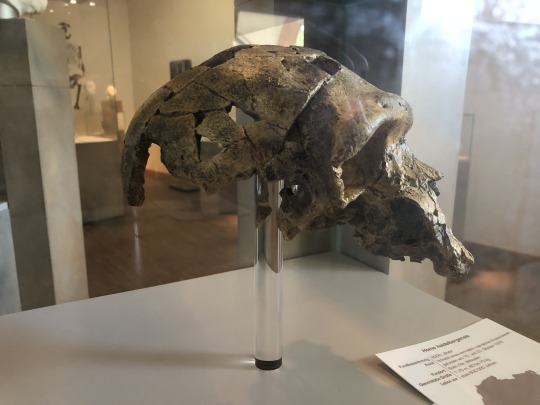
Homo heidelbergensis. Homo erectus and its many subspecies spread all over Africa and Eurasia and existed for well over a million years. As time marches on and evolution did its thing, we eventually start calling the ones in Africa Homo heidelbergensis. They were quite tall, positively enormous compared to little Lucy a few million years back, and they too joined in the human migrations out of Africa. From the H. heidelbergensis who moved into Eurasia we eventually get neanderthals and denisovans, while Homo sapiens evolved from the heidelbergensis populations in Africa.
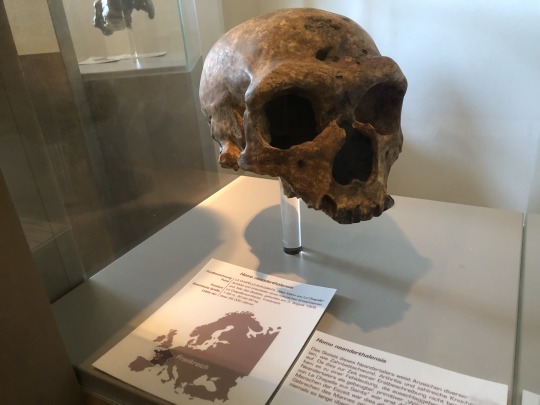

And there's the neanderthals! Large-brained and creative (the first known cave paintings belong to them and they buried their dead), they were likely quite different from the brutish image we often get from them. Rather than truly dying out, their populations eventually merged with the larger Homo sapiens population once they migrated out of Africa, leaving our modern genes with a couple percent neanderthal DNA.
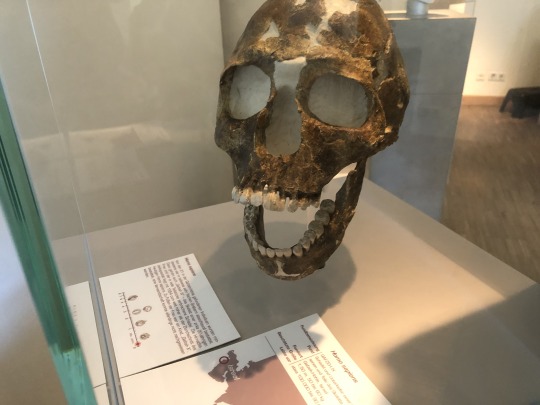
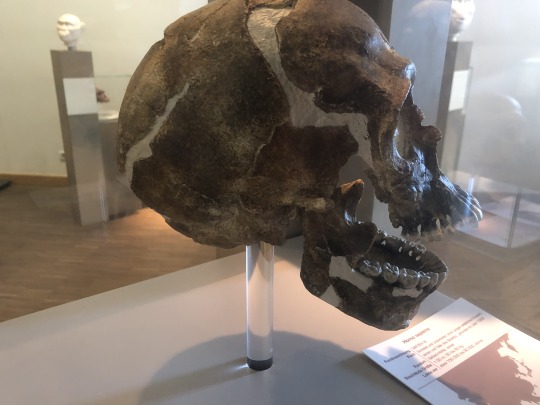
Homo sapiens. And that's us! Not so much the last remaining branch of the human family tree as much as several of the separate branches ended up coming back together and weaving into a single bigger branch.
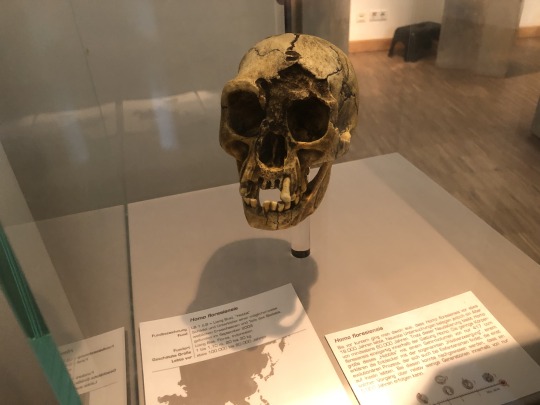

And then there's these little guys, Homo floresiensis! Probably originating from a Homo erectus population that ended up on the island Flores, insular dwarfism ended up making them grow quite tiny. On their isolated island, they remained until about 50000 years ago.
#human evolution#sahelanthropus#ardipithecus#australopithecus#homo#ape#primate#mammal#neogene#quaternary#palaeoblr#senckenberg museum#vicky's vritings
326 notes
·
View notes
Text
0 notes
Text

Yesterday, an earthquake shook the narrow coastal lands between the Atlantic Ocean to the west and the great dry abyss to the east. A landslide allowed the water to break through the narrow strip of high land and begin flooding in. The incredible power of the ocean violently widened the gap and eroded the lowlands beyond, creating an ever growing chasm and the biggest waterfall on the planet by the next day.
With the very ground under their feet unsure and brittle and the sea rushing in ever faster, some of the local animals have fled to the top of a large nearby rock outcropping that will one day be named Gibraltar. The only ones who don't seem disturbed are the Pelagornis and other sea birds, who have discovered some aerial acrobatics let them catch the fish being swept up in the flood. Though even for a bird the size of Pelagornis, an unfortunate humpback whale is way too big of a catch.
The vast, dry salt plains beyond continue much further than any of the watching animals can imagine, yet a thousand Amazons worth of water will fill up the abyss within a year or two. In the process, the Mediterranean Sea, which had dried up completely a million years before, will be reborn.
#neogene#pliocene#zanclean flood#pelagornis#gerbil#mouse#wall lizard#macaque#humpback whale#Odontopterygiform#bird#rodent#primate#mammal#flood#gibraltar#my art#paleoart#palaeoblr#miocene#messinian salinity crisis#according to some definitions this would be the second day of the pliocene#i have not been to gibraltar myself so i had to rely on google earth for references of the view of the other side#cw: animal death
21 notes
·
View notes
Text
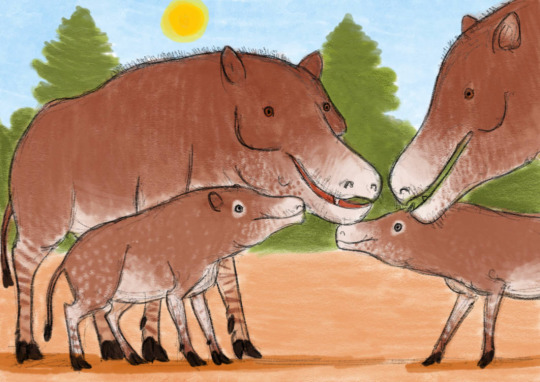
Daeodon shoshonensis family
A refreshing break from the constant portrayal of Entelodonts as mindless meat-eating monsters; besides, why do that always have to be portrayed that way?
#paleoart#paleontology#daeodon#cenozoic life#cenozoology#cenozoic#early miocene#miocene#neogene#familiy#calf#entelodont
41 notes
·
View notes
Text

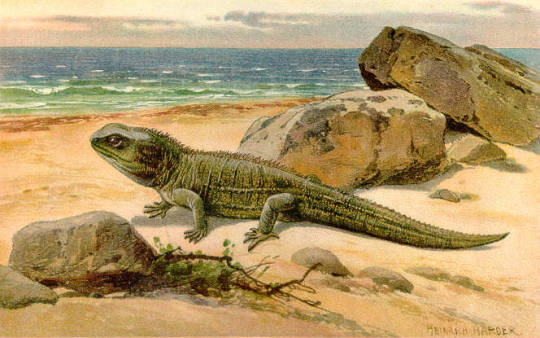

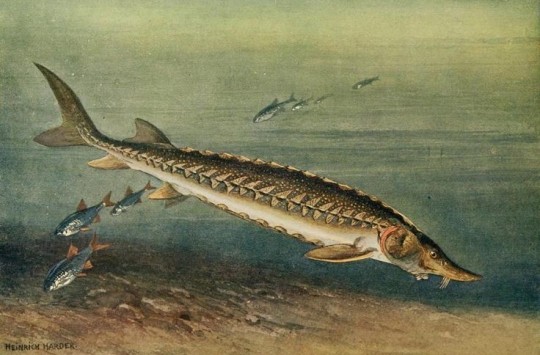

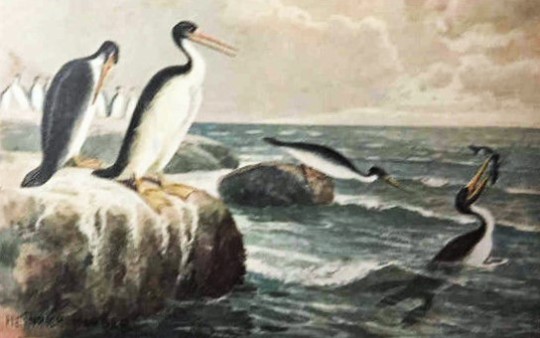
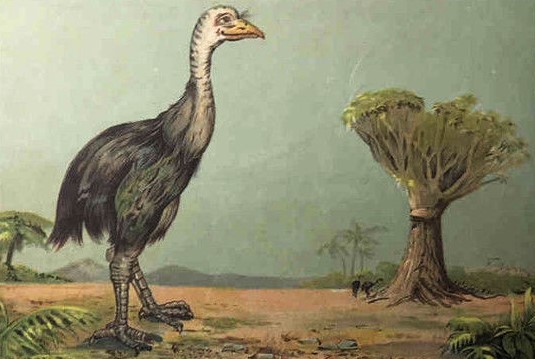
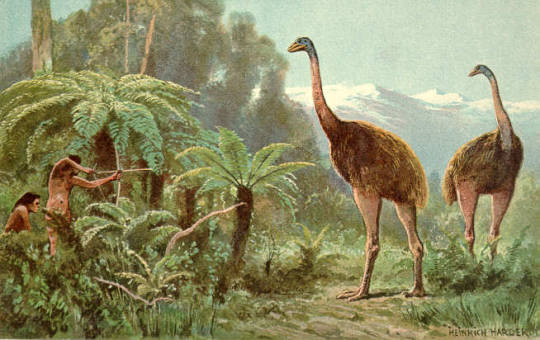
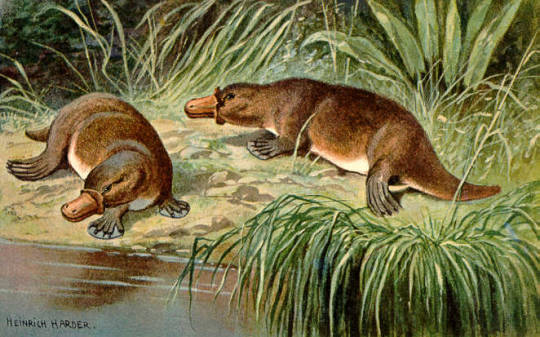


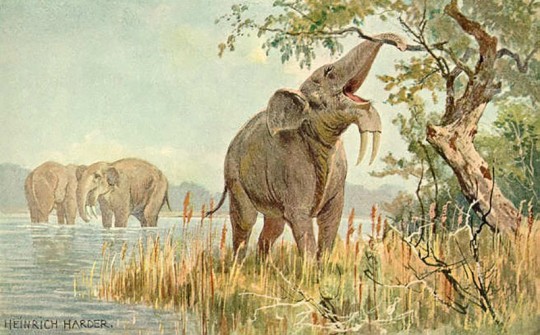

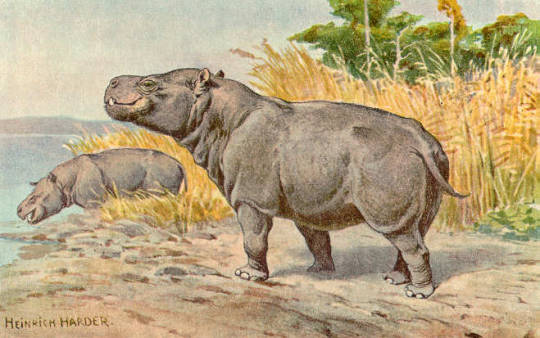
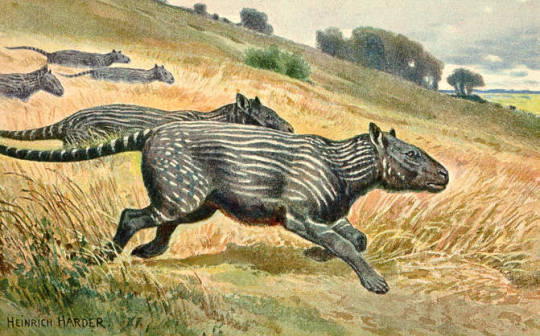
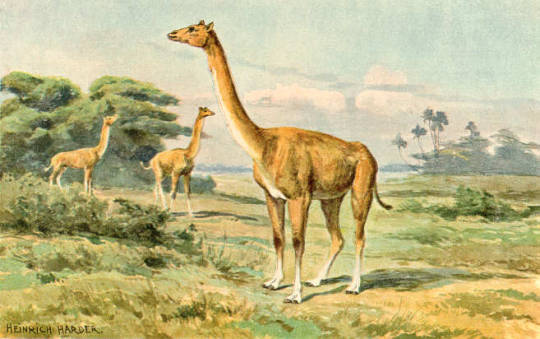
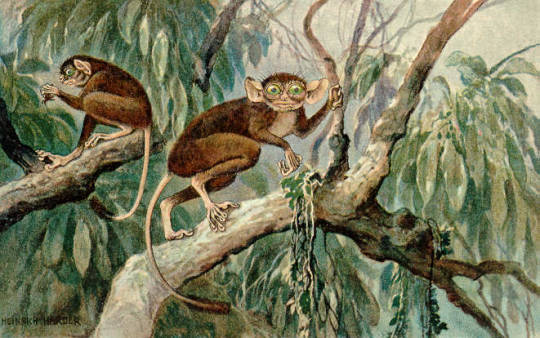
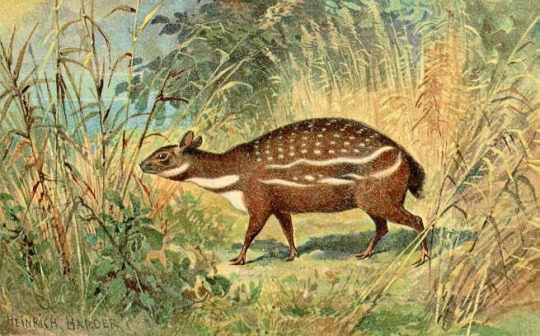




Animals of the Primeval World - art by Heinrich Harder (c. 1910)
#heinrich harder#animals of the primeval world#vintage palaeoart#vintage prehistoric art#natural history#palaeo artist#cenozoic#tertiary period#neogene period#1910s#1910
720 notes
·
View notes